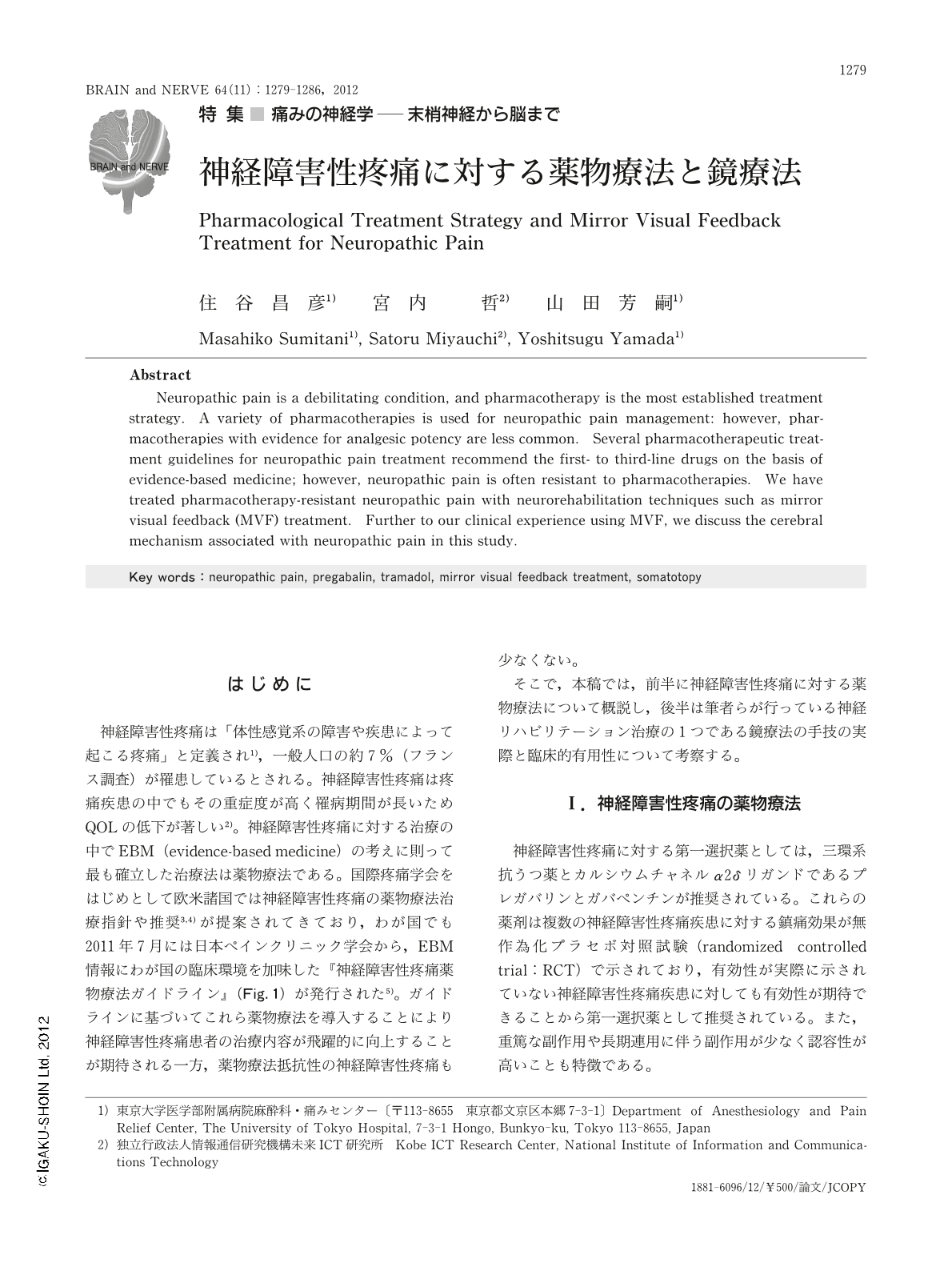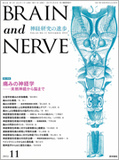Japanese
English
- 有料閲覧
- Abstract 文献概要
- 1ページ目 Look Inside
- 参考文献 Reference
はじめに
神経障害性疼痛は「体性感覚系の障害や疾患によって起こる疼痛」と定義され1),一般人口の約7%(フランス調査)が罹患しているとされる。神経障害性疼痛は疼痛疾患の中でもその重症度が高く罹病期間が長いためQOLの低下が著しい2)。神経障害性疼痛に対する治療の中でEBM(evidence-based medicine)の考えに則って最も確立した治療法は薬物療法である。国際疼痛学会をはじめとして欧米諸国では神経障害性疼痛の薬物療法治療指針や推奨3,4)が提案されてきており,わが国でも2011年7月には日本ペインクリニック学会から,EBM情報にわが国の臨床環境を加味した『神経障害性疼痛薬物療法ガイドライン』(Fig.1)が発行された5)。ガイドラインに基づいてこれら薬物療法を導入することにより神経障害性疼痛患者の治療内容が飛躍的に向上することが期待される一方,薬物療法抵抗性の神経障害性疼痛も少なくない。
そこで,本稿では,前半に神経障害性疼痛に対する薬物療法について概説し,後半は筆者らが行っている神経リハビリテーション治療の1つである鏡療法の手技の実際と臨床的有用性について考察する。
Abstract
Neuropathic pain is a debilitating condition, and pharmacotherapy is the most established treatment strategy. A variety of pharmacotherapies is used for neuropathic pain management: however, pharmacotherapies with evidence for analgesic potency are less common. Several pharmacotherapeutic treatment guidelines for neuropathic pain treatment recommend the first- to third-line drugs on the basis of evidence-based medicine; however, neuropathic pain is often resistant to pharmacotherapies. We have treated pharmacotherapy-resistant neuropathic pain with neurorehabilitation techniques such as mirror visual feedback (MVF) treatment. Further to our clinical experience using MVF, we discuss the cerebral mechanism associated with neuropathic pain in this study.

Copyright © 2012, Igaku-Shoin Ltd. All rights reserved.


